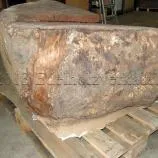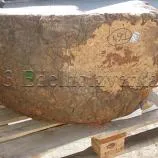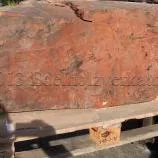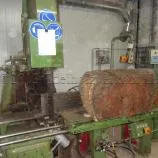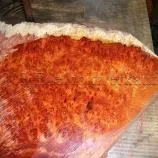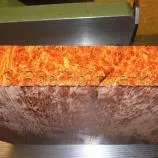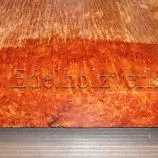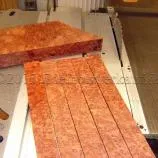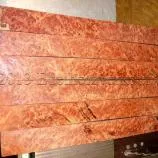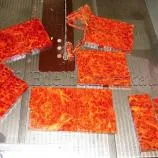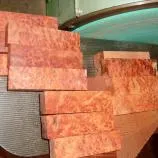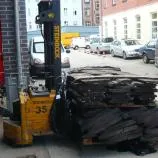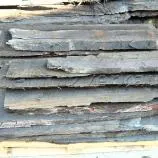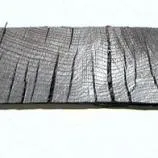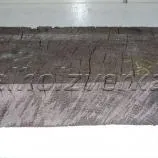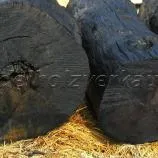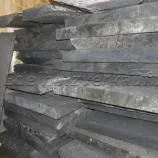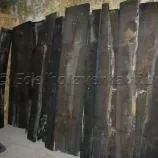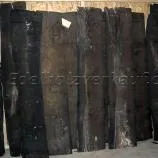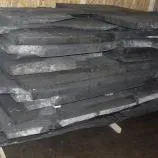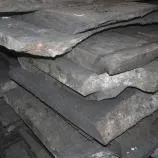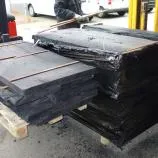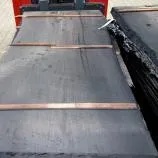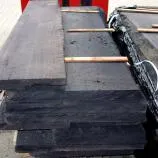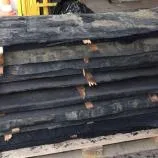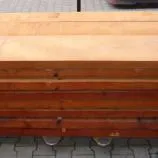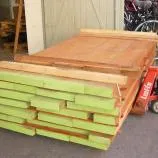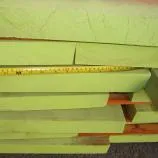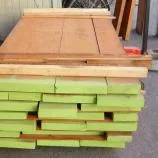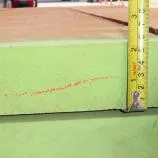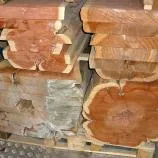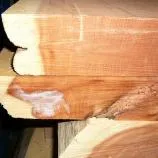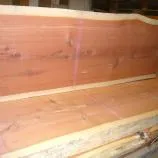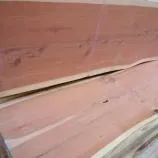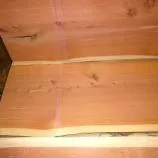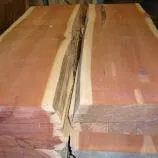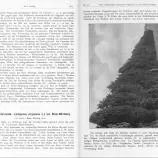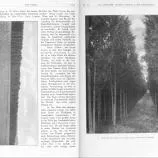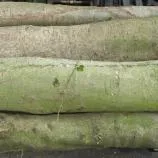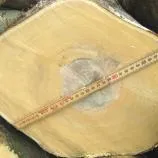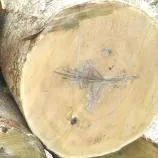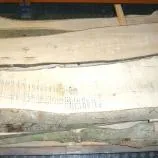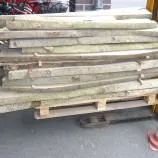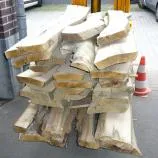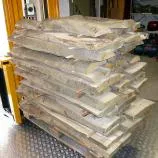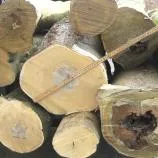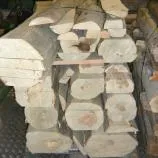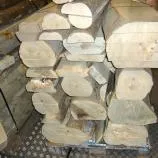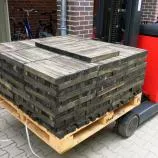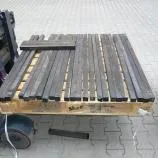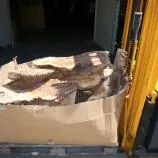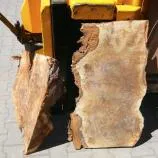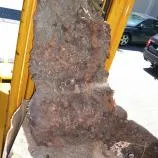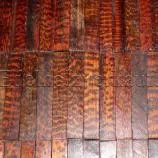Shipping country
Wood Species
News
Sometimes you just have to be patient to get a real rarity: After Mercedes-Benz had failed so badly with their four-wheeled Maybach dinosaur, for a long time there was no Amboyna burl on the market worthy of the name. In order to produce the Maybach from 2002 onwards, all major veneer manufacturers had to enter into supply contracts with the manufacturer in order to be able to supply this veneer in 1A quality and the required quantity on a long-term basis. With a demand of well over 10 m2 per vehicle, it was believed that a large quantity of Amboina veneer would be needed in the long term to ensure the long-term supply of the manufacturer or its suppliers. As a result, all the quantities of Amboina burl available on the market flowed to Maybach or its suppliers, who processed this extremely rare and expensive wood almost completely into veneers in order to be able to comply with the supply contracts. After the production of the Maybach was stopped in 2012, huge quantities of Amboyna veneer still lie on the shelves of the suppliers, the market for the veneer is completely saturated, new burls have hardly been imported due to the oversupply, and the quantities of burls available on the world market were already very small. We were now able to buy a large and beautiful burl, which fortunately has not yet been processed into paper-thin veneers, but which comes from the iron stock of one of the suppliers and still had its natural shape. Of course, there was a truly princely price to pay for this rarity, and the tuber was only very little of its inner value to be seen - the full risk lay with the buyer, us! After the payment came the day of truth, when this burl was carefully cut into different plates and slices on a log band saw and after long consultation of all involved. To make a long story short: our expectations were exceeded, the grain inside the tuber is really spectacular, very fine and really bright red, without bark ingrowths, foxing, lazy spots or "baldness", spots with little or no grain! After moistening, the wood develops a uniquely beautiful lustre, optical depth and the incredibly fine structure with all its wavy grain, burl eyes and sapwood colours is truly unique! Anyone who ever holds this wood in their hands will know the fascination of this flawless material and why for centuries this very noble and rare burl wood has been one of the most expensive woods on the world market, if it is not by far the most expensive wood used for furniture, veneers, furnishings and handicrafts! On the photos you get an impression, which metamorphosis the wood goes through, from the raw, rather unsightly tuber up to finished pairs of knife handles, still lying on the table of the saw! We are happy to be able to offer our customers real 1-A-Amboyna burl again.
Bei Baggerarbeiten in einer Grube in Norddeutschland wurde der Stamm dann im Jahr 2011 in einer Tiefe von ca. 20 Metern gefunden und geborgen, und nun wird dieser ca. 60 cm dicke Stamm, zu Bohlen aufgeschnitten, viele Jahre einem sehr langsamen und aufwendigen Trocknungsprozess unterworfen, um dann irgendwann -hoffentlich halbwegs rissfrei- als verarbeitbares trockenes Mooreichenholz in unserem Webshop aufzutauchen. Besonders die fast pechschwarze Farbe ist recht ungewöhnlich, aber nach 6400 Jahren im Morast eigentlich auch nicht anders zu erwarten gewesen! Obwohl wir Spezialisten für Mooreichen sind, haben wir doch bisher oft deutlich jüngeres Holz gehabt, die meisten Altersbestimmungen wiesen als Alter nur ca. 2000 Jahre aus. Dieser Eichenstamm aus der Jungsteinzeit (Neolithikum, ca. 5000–3000 v. Chr.) ist damit sogar etwa 1000 Jahre älter als die berühmteste Gletscherleiche der Kupfersteinzeit, des Ötzi, welcher um 3200 v. Chr. gelebt haben dürfte.
We were able to get hold of a nice bog oak post, which we have just stored in our cellar. This bog oak grew around 500 A.D. near Bad Gandersheim, until this tree at an age of about 150 years got under the water surface or under boggy soil due to a storm or something similar. Under oxygen exclusion this 8 meters long and approx. 60 cm thick trunk lay well protected in the earth under optimal conditions until 2008 and outlasted the last 1500 years of contemporary history until this trunk could be found and salvaged during maintenance work in a body of water. The crack-free drying of such bog oak is a big problem, but we were able to solve it - we are confident that from autumn 2010 we will be able to offer our customers pieces of these beautiful and remarkably wide, beautifully dark planks via our webshop!
We were once again able to get hold of a really special batch of black bog oak wood for our customers: with a trunk length of 17 metres and a diameter of approx. 70 - 80 centimetres from the second trunk length, one can only speak of a real giant tree. This trunk was found in a gravel pit while digging and was surprisingly well preserved, in particular it had become really pitch black in the course of the thousands of years it had been lying there underground. We had the trunk incised and brought it as quickly as possible to our specially designed storage room, so that the very sensitive wood does not dry too quickly and tear: this is the greatest danger for the wood and at the same time a real art, because a halfway crack-free drying is a tedious matter. On occasion we will cut off a piece of a core plank and have this sample age determined. The last games were about 1700 and 6400 years old - a really exciting show of what was going on on earth at that time when these giant trees were still small and growing!
We could once again enter a very nice access of real mahogany (Swietenia macrophylla): a very nice package of really exceptionally wide planks of real Honduras mahogany with incredible widths of up to 50 cm trimmed! Soon you will find some of them in the section guitar bodies and necks in our shop...
Cedar wood is a colloquial term that can be used to describe a wide variety of wood species. In Germany, cedar wood is generally understood to mean the wood of the Virginia juniper, which we often encounter in everyday life: in very good quality pencils, in the form of moth rings, clothes hangers, shoe trees or for smoking purposes. In reality, the unprofessionally called cedar and so characteristically fragrant wood is a tree of the juniper family, biologically called Juniperus Virginiana. The virginia juniper grows as Eastern Red Cedar (Juniperus Virginiana) on the east coast of the United States, but has been introduced as a tree in Germany for hundreds of years. Frederick the Great had specimens of these trees planted on Peacock Island in Berlin, and large plantations of about 5000 of these trees in stone near Nuremberg are known to have been planted by Freiherr A. W. Faber for his pencil factory around 1870. Here pencil cedar was deliberately planted as wood for the production of pencils. With a lot of luck we were able to buy a Virginia juniper grown in Germany, probably from the vicinity of these plantations, and process it into sawn timber. The tree has a very large diameter of over 60 cm and had to be felled because of its old age and a rotten core. We now have this wood in stock and are pleased to be able to offer our customers this very special material. Since the tree has grown up in a dense forest, there are hardly any branches to disturb the straight growth of the wood. With free-growing specimens, it is common for the tree trunk to be strongly interspersed with branches, making the wood difficult to use.
Although holly (Ilex aquifolius) grows almost everywhere in Germany, the wood of these trees is one of the rarities in the wood trade: a utilization of trunks is already difficult because they are usually interspersed with unbelievably many branches, rarely reach really large diameters and the wood is hardly known. In addition, according to the Federal Ordinance on the Protection of Species, wildly growing holly is protected and may therefore not be felled. Fortunately, however, we were able to buy a very large quantity (approx. 2 tons) of this interesting wood and have now had these trunks sawn into sawn timber of various thicknesses. After a special treatment immediately after cutting to prevent discoloration by fungi, the wood is now pre-dried to such an extent that we could stack it in blocks. Now the wood, which is very sensitive to greying, must dry in our warehouse until further processing is possible. Look forward with us to the probably largest offer of this rare, almost white and very hard precious wood!
We were again able to store a freshly arrived batch of ebony scantlings from Africa for our customers. Since the wood is still damp, the scantlings have to be stored in our climate-controlled drying rooms for a few more years. In order for you as a customer to be able to process this fascinating wood later without the risk of cracking, the drying process must be so advanced that an equilibrium moisture content is achieved in normally heated rooms. This lengthy drying of the extremely hard and dense wood is one of the reasons why this wood is such a special and expensive material..




